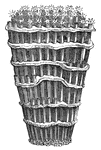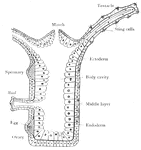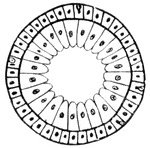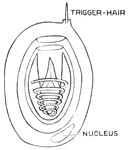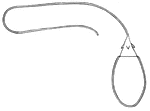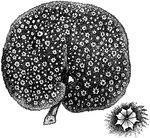Clipart tagged: ‘polyp’
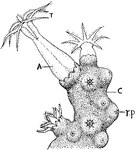
C. Ruburm
"Corallium rubrum, a corner of a colony. A., Anthocodia or retractile portion of a polyp; r.p., completely…

Coral Head
Compound coral head with polyps partly expanded and partly contracted. The expanded polyps show the…
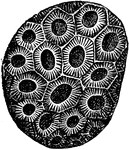
Coral Head
A compound coral head with crowded prismatic corallites. The specimen represents a worn pebble, formerly…

Red Coral
Used for jewellery, grows in a bushy form on rocks at the bottom of the Mediterranean and Red seas.
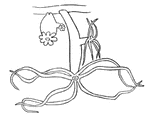
Hydra
If undisturbed, the body and tentacles may occasionally sway gently. If disturbed, a hydra usually shortens…

The Digestive Apparatus of a Hydra or Freshwater Polyp
In Radiata the digestive cavity is a pouch with a single opening, into which the food is passed and…
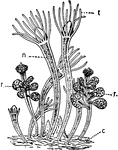
Hydractina Echinata
"Hydractina Echinata. c, the canosarc, forming an incrustation over the object on which it lives; n,…
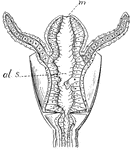
Polyp
Obelia, a simple polyp, vertical section, highly magnified, m = mouth opening, as.s = alimentary sac

Polyp
"A hydroid colony of six polyps; f, feeding polyp; r, reproductive polyp; m, a medusa." —Davison,…
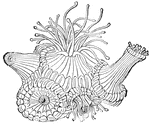
Coral Polyp
An individual coral is known as a polyp. They resemble sea anemone, as they have tubular bodies with…
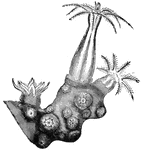
Coral Polyp
An individual coral is known as a polyp. They resemble sea anemone, as they have tubular bodies with…
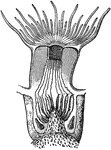
Vertical Section Through a Polyp
Vertical section through a polyp. Mouth surrounded by tentacles and beneath it the "stomatodaeum."

